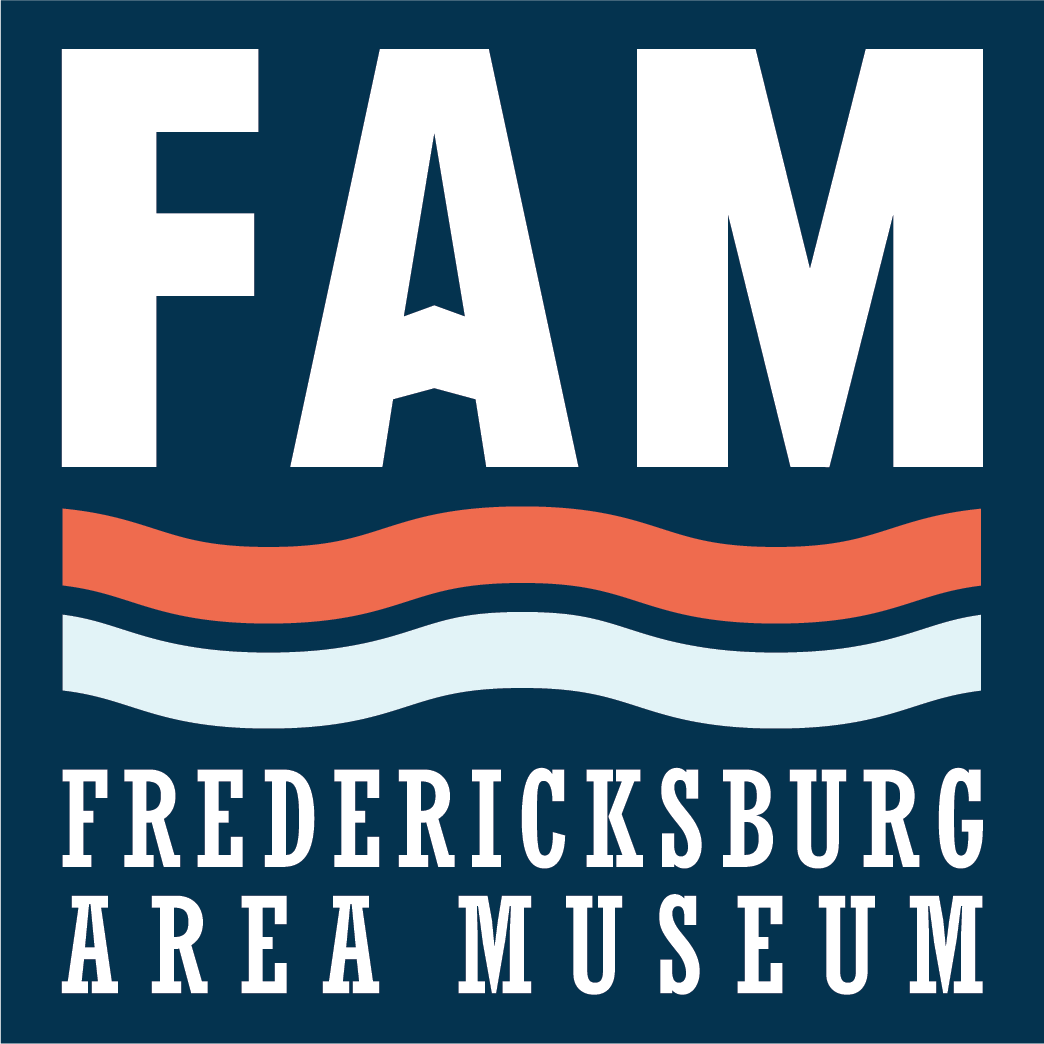K-12 Programs
About Our K-12 Programs
The Fredericksburg Area Museum (FAM) is proud to be a local partner in education, supporting the development of confident, lifelong learners. Our inquiry-based museum field trips and classroom visits connect local history to the Virginia state curriculum.
Led by trained museum educators, students will investigate the history of the Fredericksburg area through analyzing primary sources and historical reproductions, interacting with maps, engaging in discussions, and participating in hands-on activities. Our programs are designed to foster critical thinking and curiosity by encouraging students to explore history actively.
Whether visiting the museum or welcoming educators into the classroom, we tailor experiences to complement classroom lessons and connect students with history in a meaningful way.
All programs listed can be a FAM field trip or classroom visit.
Program Costs
All Programs are FREE for Fredericksburg City Public Schools.
$4 per student and chaperone.
All teachers are free.
Field Trips at FAM
$6 per student for schools within a 25-mile radius of FAM
$9 per student for schools exceeding the 25-mile radius.
All teachers are free.
Classroom Visits
K-12 Field Trips or Classroom Visits
Dinosaur Discoveries
Preschool, Kindergarten – 5th Grade
Why do scientists think dinosaurs lived near Fredericksburg? Students will step into the shoes of paleontologists and explore fossilized dinosaur tracks dating back 112 million years. Through hands-on activities tailored to each age group, children will uncover clues about these prehistoric creatures.
-
Communication, Curiosity and Initiative, Interacting with Others, Gross and Fine Motor Skills
-
K.1.F, K.7.A-B, 1.1.B, 1.5.A-C., 2.1.D, 2.5.A-C, 3.1.A-D.F, 3.4.C, 3.5.A-B, 4.1.A-D.F, 4.3.A.D, 5.1. A-D.F, 5.8.E
A River Through Time
Kindergarten – 2nd Grade
Why did early communities choose to settle near rivers? In this hands-on program, students will investigate how the Rappahannock River influenced the lives of Indigenous peoples, explorers, and early settlers in the Fredericksburg area. Through mapping and artifact activities, they’ll discover the vital role rivers played in transportation, food, trade, and the development of growing communities.
-
Skill K a-c,e,i, K.4b-d, K.5a-c, K.7c, Skills 1 a-c, h ,e, 1.4b-c, 1.5a-b, 1.7.a, 1.8d, Skills 2 a-e,h, 2.5a, 2.6, 2.8a, 2.13a
STEM in Action: Rappahannock Bridges
3rd – 5th Grade
How have different shapes been used in bridges to make them stronger? Students will explore the history of bridges spanning the Rappahannock River, discovering how engineers used arches, triangles, and beams to design strong, lasting structures. They will then apply these engineering principles by designing, building, and testing their own model bridges.
The Colonial Market Place
4th – 5th Grade
What role did Fredericksburg play in the colonial tobacco economy? In this interactive lesson, students will engage in a series of station-based activities to explore Virginia’s colonial past. They will learn about the history of Market Square, examine the importance of trade with indigenous communities and Fredericksburg’s role in the global economy during the colonial era, including connection to the transatlantic slave trade.
-
Skills VSa-c, e VS.1c, VS.3a VS.4 a-d,f, Skills USIa-c,e, USI.1b, USI.4c, USI.5b-e
Civics and Civil Rights
6th – 12th Grade
How did local students participate in and experience the Civil Rights Movement? Through analyzing primary sources and exploring FAM’s galleries, students will uncover powerful stories of local youth activism, including the Walker Grant Class of 1950 Protest, the 1960 sit-in demonstrations, and Fredericksburg’s role as the first stop of the Freedom Riders.
-
Skills USII.a,c,e,h, USII.5h-i, USII.8a, Skills CE.a,c,e,h, CE.6b-c, CE.4b, Skills VUS .a, c-e,h, VUS.16a-b,d-e, VA.US.17a, Skills GOVT. a,e,j,c,h, GOVT.2c, GOVT,3d, GOVT.10b, GOVT.11a-b,f
Freedom Stories
9th – 12th Grade
What were the challenges enslaved people faced when attempting to escape, and how did these obstacles shape their decisions on the path to freedom? Students will explore the stories of enslaved people who made the decision to escape to freedom, including John M. Washington and Anthony Burns. Through primary source analysis and exploring FAM’s galleries, students will examine the choices of these freedom seekers and the legal risks they faced.
-
VUS .a, c-e,h, VUS.8a-c, VUS.9c, Skills VUS .a, c-e,h, Skills GOVT. a,e,j,c,h, GOVT.2c, GOVT6.a




